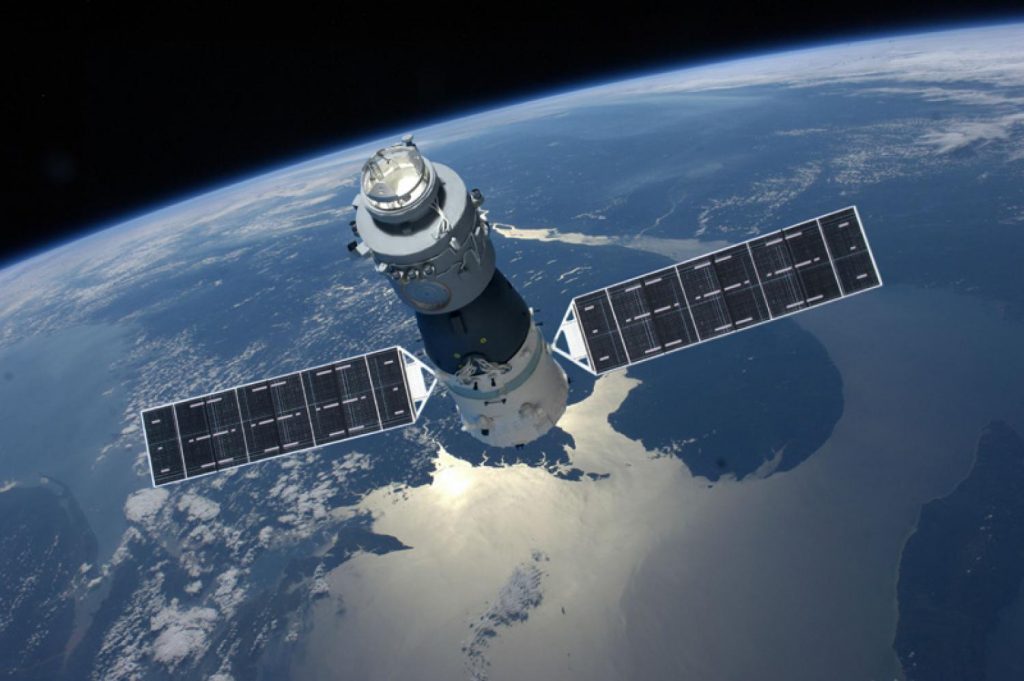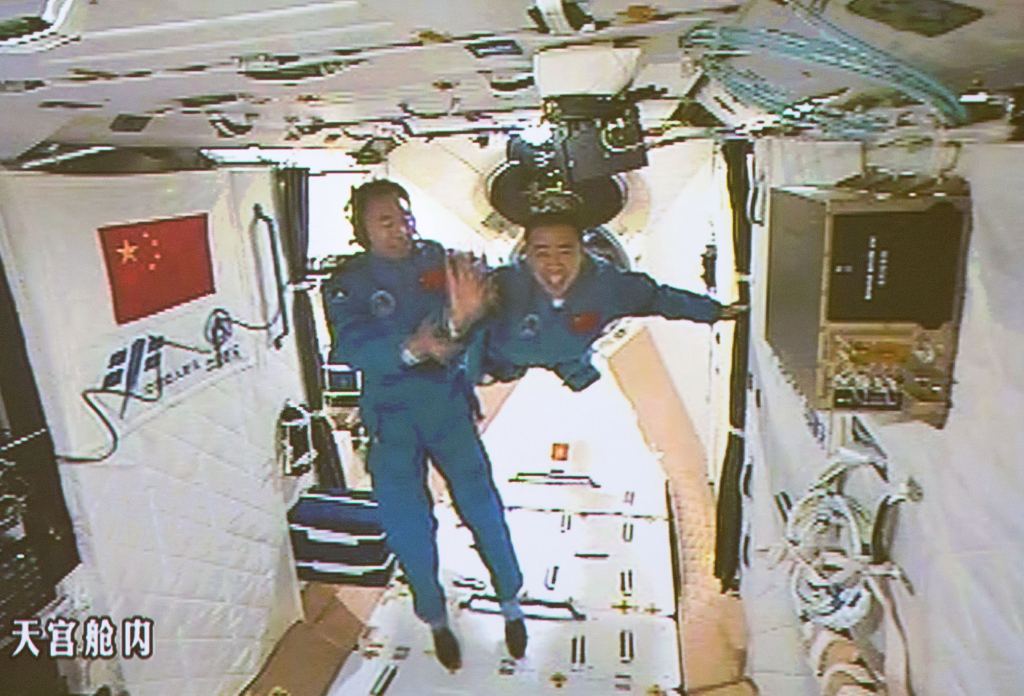On Friday, July 19th, China’s Tiangong-2 (“Heavenly Palace”) space laboratory successfully entered Earth’s atmosphere under controlled conditions and burned up above the South Pacific Ocean. This marked the successful completion of all of Tiangong-2’s tasks, which constituted China’s second attempt at testing their capability to conduct research and human operations in Low Earth Orbit (LEO).
According to the China Manned Space Agency, Tiangong-2 entered the atmosphere at 21:06 pm Beijing time (06:06 am PDT; 09:06 am EDT). While some debris fell into a “predetermined safe sea area in the South Pacific”, most of the space lab burned up during the descent. In total, the station spent over 1,000 days in orbit, exceeding its proposed 2-year lifespan considerably, and orbited Earth 16,209 times.
Tiangong-2 was launched into orbit on Sept 15th, 2016, and has achieved some impressive feats ever since. These included completing four successive dockings with the Shenzhou-11 crewed spaceship and the Tianzhou-1 cargo spaceship. During its many orbits of Earth, Tiangong-2 supported astronauts teams of two, who would live and work in the station for a period of 30 days.
The station also allowed a number of key technological breakthroughs to be realized and completed a number of extended tests during its service. These accomplishments and those of its predecessor – Tiangong-1 – will lay the groundwork for the development, constructions, deployment, and operations aboard China’s third and final orbital laboratory, the Large Modular Space Station (LMSS).
Said astronaut Jing Haipeng, who spent his 50th birthday on Tiangong-2 on Oct. 24, 2016:
“As the first to enter Tiangong-2, I’m happy that the space lab has successfully completed its tasks, though I’m also missing it since it was our home in space. My memory of the 30 days on Tiangong-2 with Chen Dong is still fresh. We conducted many scientific experiments such as raising silkworms and growing plants in space. China is stepping up efforts to prepare for the construction of the space station. We are confident that a space station belonging to the Chinese people is coming soon.”

“The 30 days on Tiangong-2 were the happiest and most unforgettable experience in my
Unfortunately, it was time for the second “Heavenly Palace” to be brought back to Earth before it ceased operations and became a derelict space station. Zhu Zongpeng of the China Academy of Space Technology was the chief designer of Tiangong-2. As he explained in a recent interview with Xinhua:
“It’s hard to say goodbye to Tiangong-2, but considering reliability- and safety-related factors, we have to drive it out of orbit. To let Tiangong-2 ‘retire’ by choice is to ensure the absolute safety of its departure,
This decision was likely informed by the re-entry of China’s Tiangong-1 space station back in April of 2018, which took place two years after it had ceased operations. By comparison, this event had been somewhat of an uncontrolled affair. Initially, authorities were concerned because it wasn’t entirely clear if the Chinese were still in control of the station.

As the descent drew nearer, there were additional concerns about the date of the station’s re-entry, where it would fall, and how much debris would survive, which were all subject to a little guesswork. Nevertheless, both Tiangong-1 and its successor have now been brought back to Earth safely and the lessons learned from them will come in handy when the LMSS is operational.
The first module (the Core Cabin) is scheduled to be launched into orbit next year while the other two (the Wentian and Mengtian Laboratory) are slated to be launched in 2021 and 2022, respectively. Along with three docking ports, an EVA hatch, and multiple solar arrays, China hopes to have the entire space station assembled by 2022.
Since the International Space Station (ISS) is due to be retired in 2024, this means that China will be the only nation with an orbiting space station by that time. However, the LMSS will be much smaller, measuring about the same size as Russia’s now-retired Mir space station. It will also be about one-fifth the mass of the ISS, which weighs a good 400 metric tons (441 US tons).
All of this serves to highlight the accomplishments of the Chinese space program, which has been following a “Three-step Strategy” of development for the past 20 years. In that time, China has sent 11 crewed spacecraft, 2 space laboratories, and sent 14 astronauts into space and brought them home safely.
In the coming years and decades, China will send many more robotic missions to space and even hopes to conduct crewed missions to the Moon. It is also hoped that China will join space agencies like NASA, Roscosmos, the ESA the ISRO to such projects as the International Moon Village and other major space ventures.

